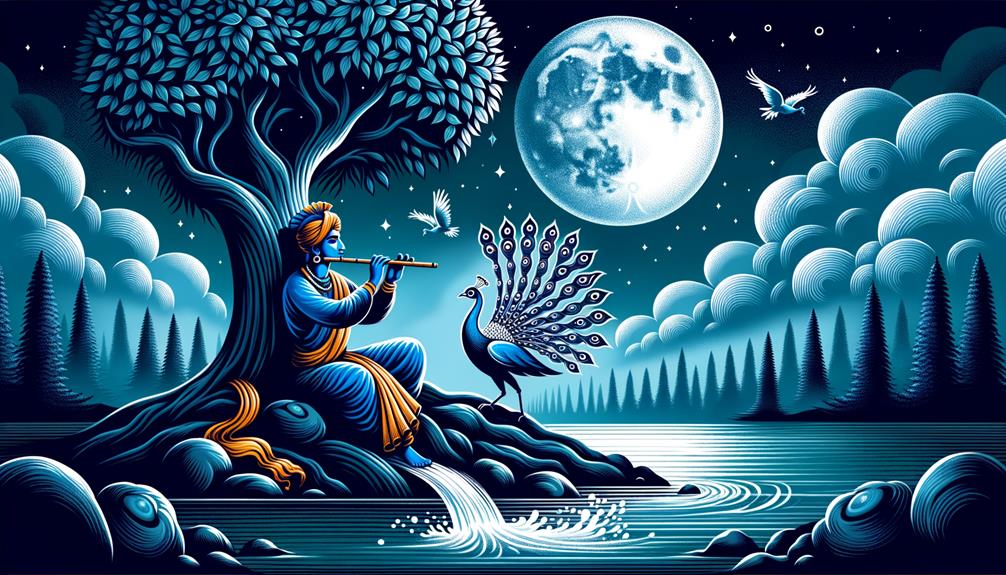Krishna, a deity in Hindu mythology, is often seen in hues of blue, symbolizing his limitless nature and his power to bring about change. Isn't it fascinating how his childhood stories beautifully mix human experiences with divine attributes? These tales feature his brave deeds, providing a unique take on what's right and what's not. His divine guidance in the epic tale of the Mahabharata, his heartwarming love stories, and his enchanting flute tunes add to his captivating character. Now, if we dig deeper into these aspects, you'll see how Krishna's charm and teachings continue to ring true in today's world.
The Divine Significance of Blue
Have you ever wondered about the divine significance of the color blue in Hindu mythology? It's quite fascinating. The color blue isn't just a simple hue; it symbolizes the vast expansiveness of the universe and the core of existence. Gods like Shiva, Krishna, and Rama are often shown with blue skin, a visual representation of their boundless nature.
Take Krishna for instance. He's usually represented with an electric blue aura, which symbolizes his ability to bring about change. There's something irresistible about his blue skin; it's a visual symbol that reflects his charismatic personality and spiritual power. To fully grasp the meaning behind Krishna's blue appearance is akin to understanding a divine nod of approval. This color goes beyond the physical realm, it resonates with Krishna's divine energy. It's like a mirror reflecting his boundless nature and capacity to transform.
Krishnas Enchanting Childhood Tales
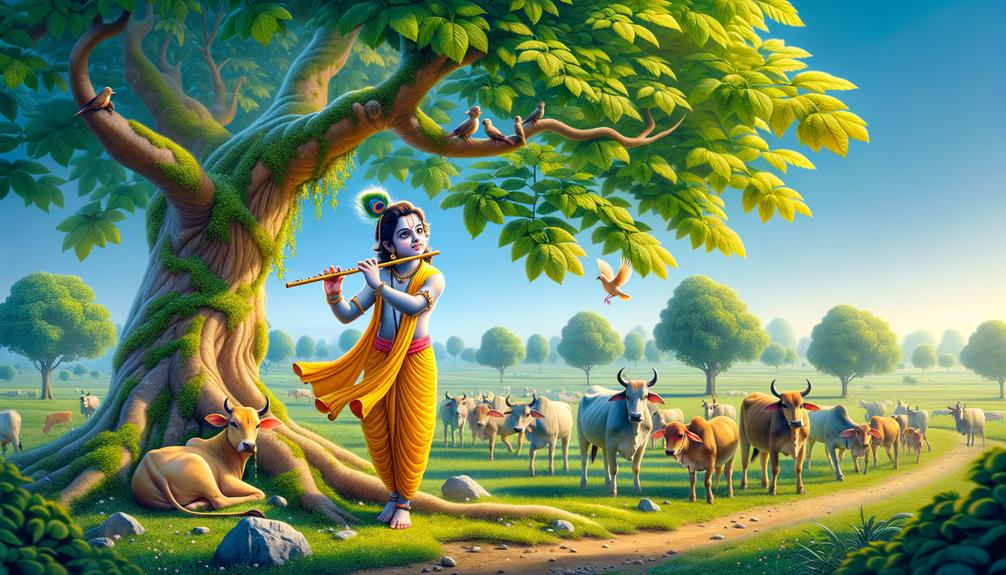
Let's chat about the charming childhood tales of Krishna, a character who is both mischievous and courageous. His playful adventures have captivated kids for countless generations. These stories, drawn from Hindu mythology, are packed with divine and human elements, and they've piqued the curiosity of not just children, but scholars and grown-ups too.
In these narratives, we follow Krishna on his thrilling escapades as he engages with deities, monarchs, and monsters. His divine attributes shine through his heroic deeds, while his human side is exposed in his playful interactions with the village maidens. This intriguing mix of godly and human traits makes the stories all the more appealing.
The depth and richness of these childhood stories are further amplified by the vivid illustrations that accompany the narratives. These images offer a peek into the ancient Indian civilization, fostering an appreciation for this colourful cultural legacy.
The Role of Krishna in Mahabharata
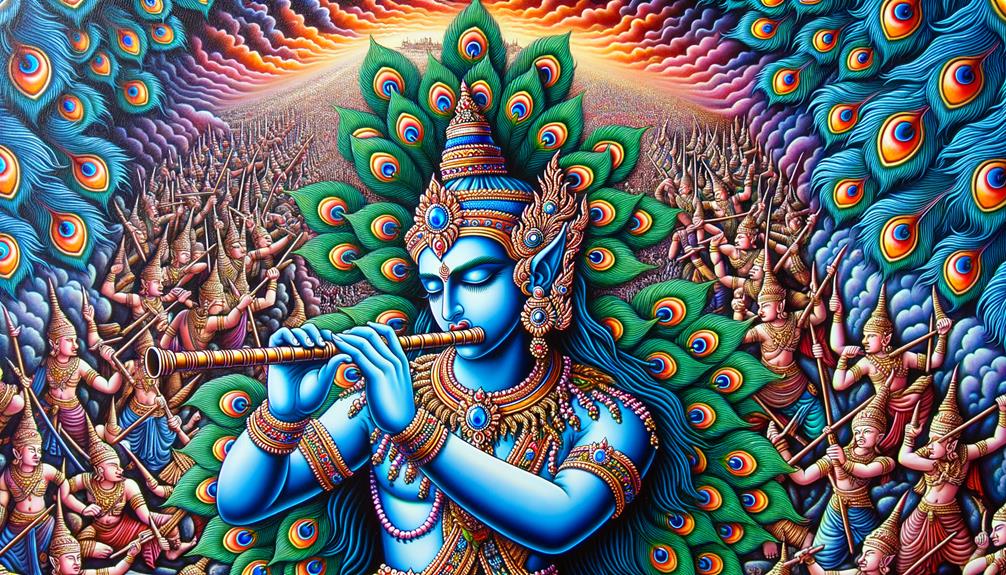
Krishna, the charming, wise character we see in his youth, takes on a more critical role in the epic tale of Mahabharata. He becomes both the driver and mentor to Arjuna during the tumultuous Kurukshetra war. His strategic advice and divine influence turn the tide of the war. His words of wisdom guide us on the path of duty and righteousness, much like the teachings found in the Bible.
His deep teachings, found within the Bhagavad Gita, are a spiritual compass for many. This sacred text, comparable to the Bible, emphasizes the importance of fulfilling one's duty and living a righteous life. Here, Krishna expertly guides Arjuna's actions, nudging him towards his duty or dharma.
Let's take a quick look at a summary of Krishna's role in the Mahabharata:
| Role | Significance |
|---|---|
| Charioteer & Mentor | Steers Arjuna towards his duty |
| Teacher of Bhagavad Gita | Shares lessons on righteousness and duty |
| Divine Influence | Swings the war's outcome in favor of the Pandavas |
Krishna's role in the Mahabharata shows us his divine mission – to guide humanity on the path of righteousness, duty, and eventual liberation. His actions and teachings represent the eternal battle between good and evil, demonstrating the victory of duty over wrongdoing.
Symbolism in Krishnas Flute Melodies
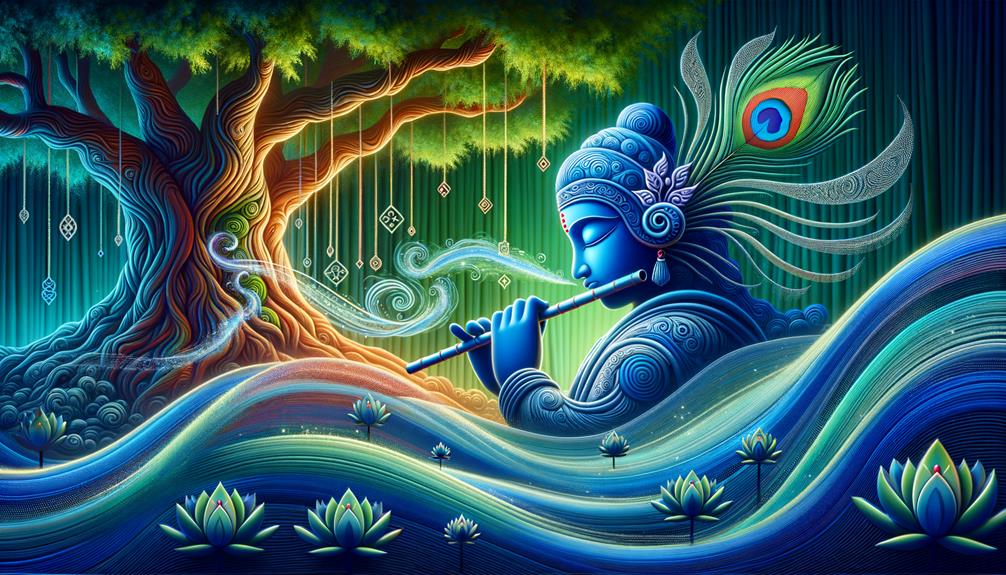
Whenever you hear tales of Krishna, his enchanting flute music is sure to come up. It's seen as a symbol of divine love, much like a spiritual hotline between us and the universe. Each tune, each beat of Krishna's flute music has a deep-rooted connection that's reminiscent of the spiritual ties mentioned in the Bible. This divine love isn't just your run-of-the-mill affection; it's a love that's all-inclusive and selfless, going beyond the sphere of the spiritual.
Krishna, known as the blue god, didn't just play his flute for humans. Even animals, trees, and the elements stopped in their tracks, taken in by the divine vibes in the tunes. The spiritual essence in the hypnotizing tunes could stir up latent love and devotion in the hearts of those who listened, nudging them towards a spiritual awakening.
But Krishna's flute tunes aren't just pleasing to the ear. They're an invitation to unity, a kind of spiritual GPS for those feeling lost in the worldly life. They represent the ability within each of us to recognize our divine essence, to sync with the universal soul, and the transformative power of music to pave the way for such a deep spiritual experience.
Krishnas Love Stories and Teachings
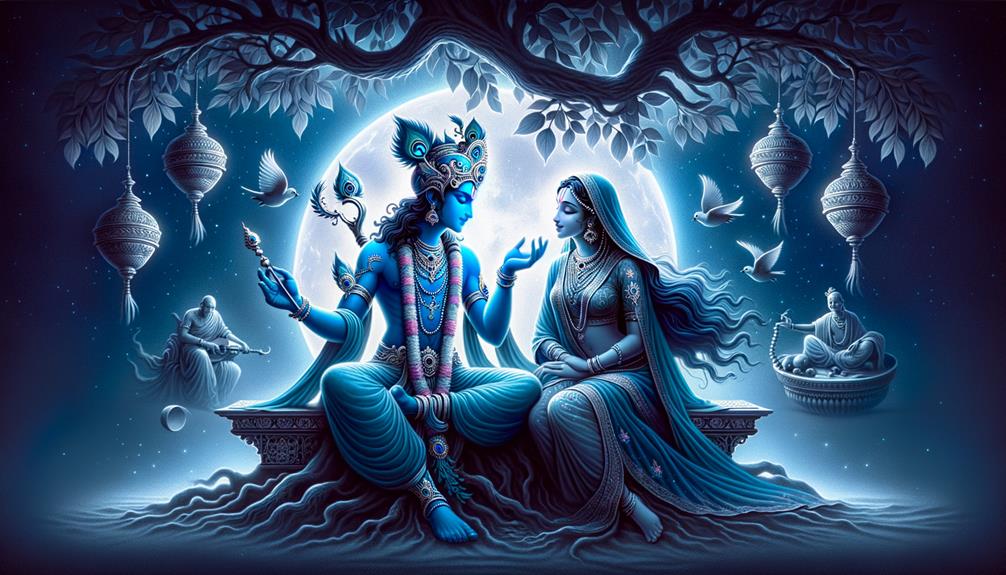
Krishna's love stories and teachings, especially with Radha and Rukmini, are like a masterclass in spiritual devotion. Just think about it. The music of Krishna's flute isn't just music, it's a symbol of divine love. His love stories are much like some tales in the Bible, where God's love for humans is portrayed as a lover's deep affection.
Let's talk about Radha first. She was a simple village girl, but her relationship with Krishna has become an epic symbol of pure and everlasting love. Then there's Rukmini, Krishna's wife. Their marriage is a fine example of duty and righteousness, much like the teachings of the Bhagavad Gita where Krishna guides Arjuna on the path of self-discovery.
And who can forget Krishna's playful moments with the Gopis, the village girls? His charisma and charm won over their hearts, showing us that love and devotion towards the divine are universal.
Krishna's wisdom about karma, dharma, and devotion still resonates with spiritual seekers today. His teachings are as relevant and timeless as ever. So, when we delve into Krishna's love stories and teachings, we're not just learning about Hindu mythology. We're also finding timeless wisdom on love, duty, and spiritual devotion.
Frequently Asked Questions
Why Is Krishna Depicted as Blue?
The depiction of Krishna in a blue color is a representation of his vast and encompassing nature. This blue hue is a metaphorical extension of his aura, a powerful energy field that adds to his magnetic appeal. This color transcends his physical appearance, showcasing his charismatic allure and the profound influence he wields in the world.
Who Is the Blue God in Hinduism?
Guess who we're talking about again? That's right, it's Lord Krishna, the remarkable blue god in Hinduism. His distinctive blue colour isn't just for show. It's actually a symbol of divine potential and transformation, which makes Lord Krishna a key character in the stories and teachings of Hinduism.
Why Is Lord Vishnu Blue?
So, why is Lord Vishnu blue? Well, in Hindu mythology, Lord Vishnu's blue colour isn't just a random choice. It's actually a symbol that signifies his all-embracing nature. It's like a visual metaphor for the universe's grandeur. But it's not just about scale, it's also about his divine aura and dynamic character. And you know what? It's these aspects of him that are so compelling, and that's why devotees are so drawn to him.
Why Is Lord Rama Blue?
It's a common misconception that Lord Rama is always represented as blue, much like Krishna. However, that's not usually the case. The color of Rama's skin isn't a crucial part of his depiction, unlike Krishna, where the blue color holds a unique symbolism. So, essentially, the blue hue is exclusive to Krishna and isn't generally associated with Rama.

